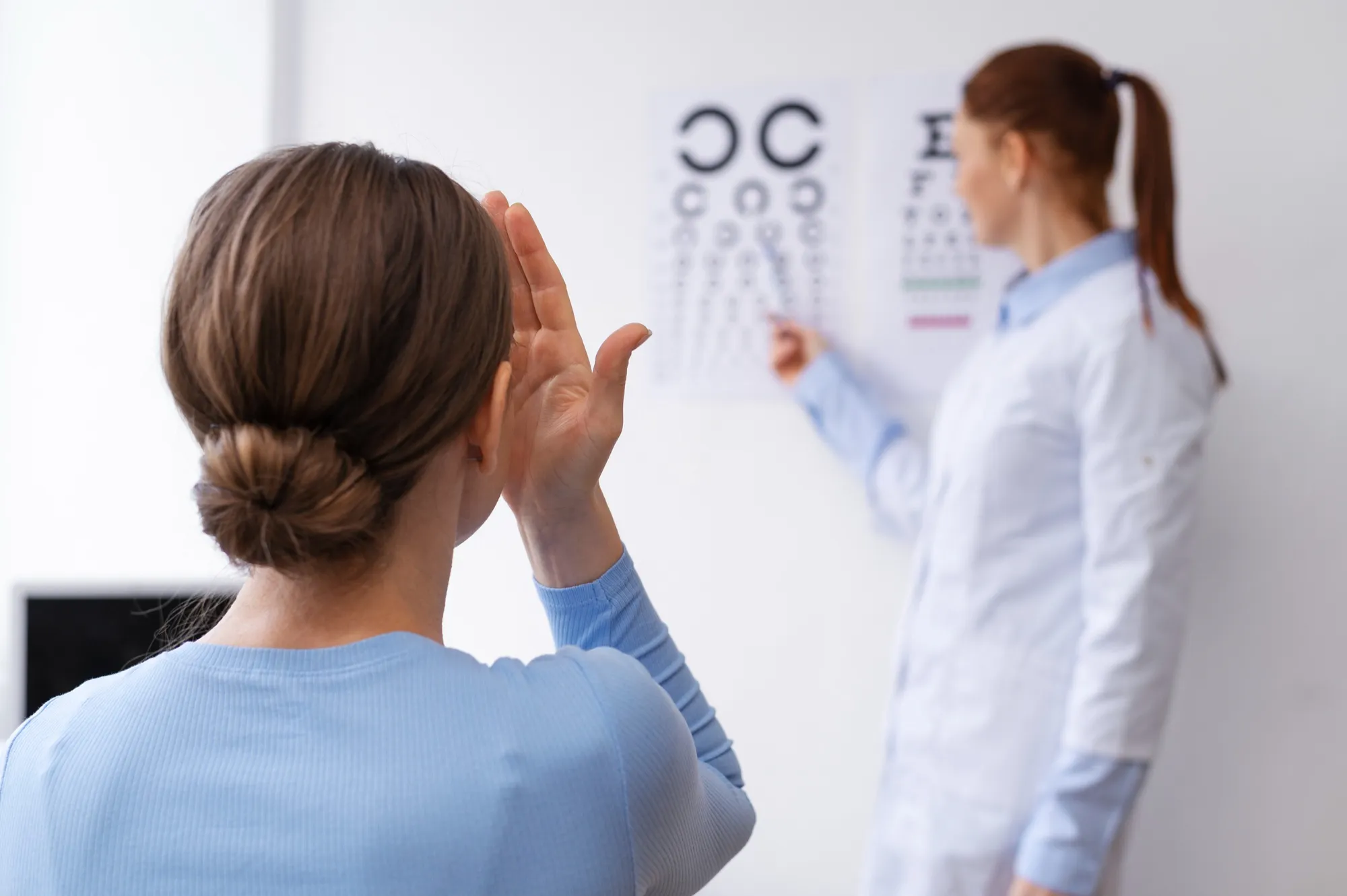Researchers have long debated the role of near work, such as reading, computer use, and other close activities in the development of myopia, commonly referred to as nearsightedness. A groundbreaking study [DOI: 10.1038/s41598-019-43408-y] conducted by experts at the University of Houston’s College of Optometry and published in _Scientific Reports_ on May 6, 2019, offers new insights into this ongoing discussion by introducing a novel device called RangeLife.
The RangeLife device is the first of its kind, capable of continuously and objectively measuring an individual’s working distance – the range between the eyes and the object of visual attention. Developed by a team led by Dr. Lisa Ostrin and Dr. Edwin Ostrin, this innovative device was meticulously built, calibrated, and validated before being utilized in real-life scenarios.
During the study, adult participants wore the RangeLife device throughout their daily routines, both on weekdays and weekends. They also wore an actigraph to simultaneously record light exposure and physical activity levels. To corroborate the collected data, the subjects kept detailed activity logs and responded to visual activity questionnaires.
Findings from this robust research effort revealed that subjects exhibited significantly higher diopter hours (dh), which is a weighted measure of near work exposure, on weekdays (14.73 ± 4.67 dh) versus weekends (11.90 ± 4.84 dh, p = 0.05). A staggering 94 ± 1.85% of near and intermediate viewing activities occurred under mesopic and indoor photopic light levels (<1000 lux), and 80.03 ± 2.11% took place while subjects were primarily sedentary (<320 counts per minute). The subjective self-reports of time spent on near and intermediate distance activities consistently overestimated the objective data (p = 0.002).
This unprecedented objective evidence aligns with a body of research suggesting that near work could significantly influence the progression of myopia, a condition that has reached epidemic proportions globally. Previous studies have shown that myopia heritability does not preclude its rapid prevalence shifts, as seen in certain populations over time (Rose et al., 2002; DOI: 10.1046/j.1442-9071.2002.00521.x). Similarly, environmental factors, including lighting conditions and physical activity, have been implicated in myopia development and progression (Wang et al., PloS one, 2015; DOI: 10.1371/journal.pone.0127863).
The RangeLife device’s contribution to understanding viewing behaviors holds potential for developing individualized management strategies for refractive errors. This innovation could revolutionize how optometry approaches myopia, moving from subjective self-reporting, prone to inaccuracies (Whiteman & Green, Int J Epidemiol, 1997; DOI: 10.1093/ije/26.4.855), towards precise measurement tools enabling clinicians and researchers to better assess risks and monitor near work behaviors.
Dr. Edwin Ostrin and Dr. Lisa Ostrin are coinventors of the RangeLife device and the provisional patent for it is managed by the University of Houston (Patent No. 62/608,755). The significance of their work is bolstered by grants from the NIH [P30 EY007551; T35 EY007088] which supported this research. The implications of the study are profound, setting the stage for further innovation and potential modifications to lifestyle factors to help prevent or slow the progression of myopia.
The study and its findings have attracted the attention of the global optometry community and raised awareness about the critical need for better understanding the role of near work in myopia. With an increase in digital device usage across all ages, especially among children who are experiencing dramatic shifts in myopia prevalence (Liang et al., Br J Ophthalmol, 2013; DOI: 10.1136/bjophthalmol-2012-302468), devices like RangeLife could become indispensable tools in both research and clinical practice.
As for practical applications, the usage of RangeLife could be expanded to monitor children and teenagers, who are particularly susceptible to developing myopia due to their extensive near work demands from school and leisure activities. This aligns with research that indicates the importance of outdoor activities in reducing myopia onset (Wu et al., Ophthalmology, 2013; DOI: 10.1016/j.ophtha.2012.11.009).
The study’s authors also emphasize the need for further research to explore the interaction between light exposure, circadian rhythms, and myopia development, as well as to optimize interventions that could alleviate the myopic shifts associated with modern lifestyle habits.
References
1. Rose KA, Morgan IG, Smith W, Mitchell P. High heritability of myopia does not preclude rapid changes in prevalence. Clin Experiment Ophthalmol. 2002;30:168–172. DOI: 10.1046/j.1442-9071.2002.00521.x.
2. Wang Y, et al. Exposure to sunlight reduces the risk of myopia in rhesus monkeys. PloS one. 2015;10:e0127863. DOI: 10.1371/journal.pone.0127863.
3. Liang YB, et al. Generational difference of refractive error in the baseline study of the Beijing Myopia Progression Study. Br J Ophthalmol. 2013;97:765–769. DOI: 10.1136/bjophthalmol-2012-302468.
4. Wu PC, Tsai CL, Wu HL, Yang YH, Kuo HK. Outdoor activity during class recess reduces myopia onset and progression in school children. Ophthalmology. 2013;120:1080–1085. DOI: 10.1016/j.ophtha.2012.11.009.
5. Whiteman D, Green A. Wherein lies the truth? Assessment of agreement between parent proxy and child respondents. Int J Epidemiol. 1997;26:855–859. DOI: 10.1093/ije/26.4.855.
Keywords
1. Myopia research
2. RangeLife device
3. Near work and myopia
4. Objective measurement myopia
5. Vision health technology
The University of Houston researchers have published results featuring a new, first-of-its-kind RangeLife device that objectively measures working distance in myopia research. This revolutionary tool offers insight into the actual near work behavior of individuals, which substantially differs from self-reported habits. Findings from this study show the significant impact of near work in myopia, providing reliable data that sets the stage for future research and potential preventative strategies. With myopia on the rise due to lifestyle changes, the utilization of the RangeLife device could lead to significant advancements in vision health.
